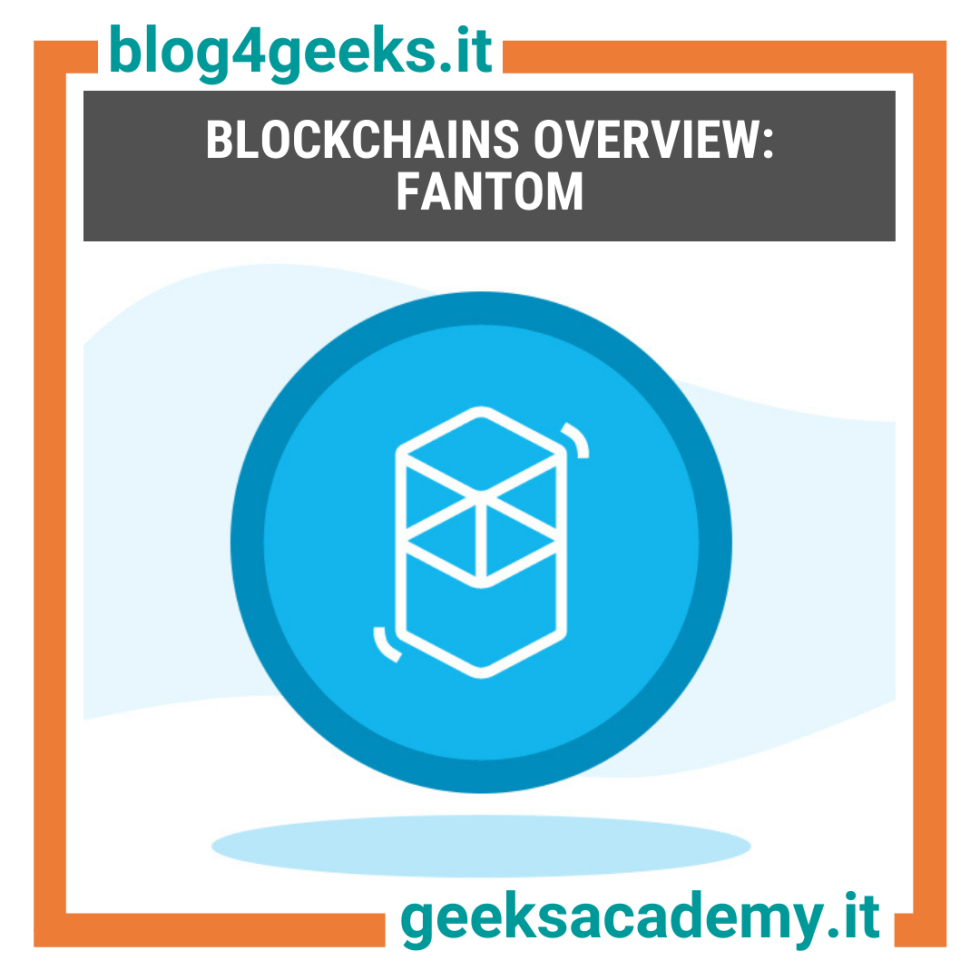
Discover Geeks Academy’s articles on: Blockchain, Coding, Cybersecurity, Cloud, Big Data, Artificial Intelligence, Gaming, Digital Innovation
One of the most trending blockchain around Q4 2021 and Q1 2022 is certainly Fantom, getting much hype thanks to recent motorsports collaborations, such as the F1 team AlphaTauri and the popular MotoGP legend Valentino Rossi. Born in 2018 with a $40M Initial Coin Offering and launched later in 2019 by Ahn Byun-ik and David Richardson, the Fantom Foundation has attracted so much attention (FTM token price has increased from $ 0.003 to an all-time high above $3): its main feature is the Lachesis algorithm.
Lachesis and Scalability
Fantom can be defined as a decentralized platform for smart contracts based on DAG (Directed Acyclic Graph) and the aforementioned algorithm, Lachesis, which powers the Opera mainnet (Fantom's open source network), supporting compatibility with Ethereum dApps thanks to an EVM and allowing a simple and less expensive projects migration than Ethereum as well as the option to code the FVM SDK.
If Ethereum takes credit for launching the first smart contracts, it is also true that the network, by using the same infrastructure with so much complex dApps and numerous users, has encountered congestion and slowdown issues. That does not happen on Fantom as dApps use different blockchains, communicating only at the end of the process with Lachesis (which is a mechanism similar to sharding), thus making the most from security, speed and interconnection.
A DAG, or Directed Acyclic Graph, is an alternative to the blockchain. Instead of being collected in blocks and sequentially processed, the transactions are added in a chaotic way into a tree-like graph and each transaction matches a graph vertex. It is not “tidy” as a usual blockchain, however it’s objectively more efficient. This gap does not create any issues regarding TPS, so the Fantom Foundation suggests to shift the attention elsewhere: no more talking about transactions per second, rather TTF, or Time-to-finality. According to developers, the time required to confirm any transaction is equivalent to 1 second. it is therefore clear that scalability is one of Fantom’s strongest point.
DeFi and Andre Cronje
In addition to scalability, Fantom heavily aims at DeFi. In January, Fantom's TVL hit figures close to $13B. Decentralized exchanges such as Spooky Swap and Beethoven X attracted DeFi users’ attention, bringing large liquidity to the network, thanks also to lend & borrow protocols, Geist Finance and Scream. Furthermore, Fantom’s growth has brought into the ecosystem key projects as Beefy.Finance and Curve. However, in recent weeks, such growth has suffered a major halt due to the farewell of a DeFi’s leading member: Andre Cronje.
Andre Cronje is a South African entrepreneur, known in the crypto universe as Yearn Finance founder, a remarkable lending and yield optimizer protocol. In recent years, Cronje has been developing several Fantom dApps, including Solidex and Multichain, and played an active role in the Fantom community and beyond. A few weeks ago, Andre Cronje and his business partner announced their exit from the cryptocurrency and DeFi space; investors, as in every moment of uncertainty, massively sold any asset related to Cronje. The FTM token suffered a loss of almost 50% in just a few days, following a liquidity outflow from the whole ecosystem. Few days later, the Fantom Foundation itself released an official statement, claiming that Cronje's departure does not compromise neither protocols nor the blockchain’s development.
Why you should learn blockchain?
DeFi, Agrifood, IoT, Sharing Economy, Insurance, Art, Gaming, Law. Blockchain’s use cases are endless, and understanding the way to make this technology even more efficient is just the beginning. One of the most relevant field of application is the industrial sector, where countless jobs of the future could theoretically be replaced by smart contracts, oracles and AI.
Blockchain’s skills are increasingly in demand. It is not too late to start your career now: blockchain is just becoming everyday life. However, the learning curve is still steep: many companies still cannot fully understand the difference between an usual database and a blockchain, so when they turn to business advisors, their use cases are often not suitable for the technology they want to use.
Here’s what it takes:
By checking different job vacancies, this is a list of the most relevant skills and requirements:
- Understanding of algorithms, data security, decentralized technologies and data structures.
- A solid background in coding skills, with at least one of the following programming languages: Python, JavaScript, JAVA, C, C++.
- General understanding of ledgers, blockchains and cryptocurrencies.
- Expertise in performance management and anomaly detection.
- At least basic experience in building blockchain frameworks and business applications.
Don't live the future as a sidekick... be a superhero! Discover Geeks Academy’s training offer in Blockchain & Coding:
Blockchains Overview is an in-depth series about the most popular blockchains. Below a comprehensive list of the ones we have been talking about: